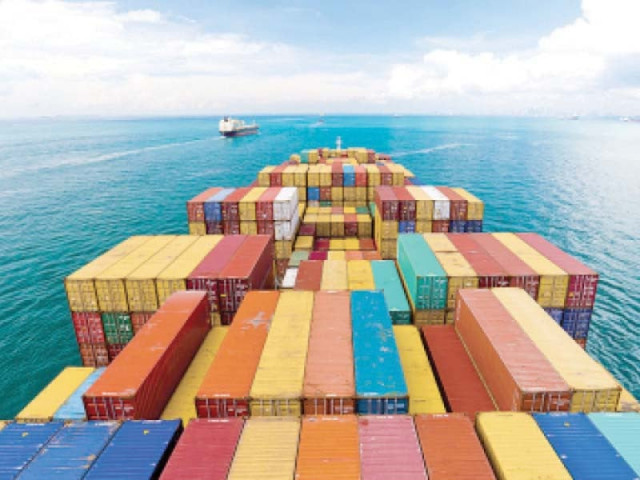Twin deficits to remain ‘higher’
Planning ministry report says policy measures to contain imports couldn’t create impact

Slippages are expected against the budget targets set for fiscal and external sectors -- the mother of the country’s economic crisis -- as the policy measures to contain imports could not create an impact, revealed a new government assessment released on Friday.
The mid-year (July-December) economic review report by the planning and development ministry also showed that the growth in textile exports was “predominant” because of the higher global prices as the share of the quantity increase was a mere $343 million.
The report also disclosed that inflation would stay high far higher than the official target of 8%.
“On fiscal and external account, slippages are expected as pressures on imports will only gradually moderate and notwithstanding stellar revenue efforts on taxation side, [the] expenditure side will remain under pressure to finance delivery of social sector services and vaccination rollout programmes,” the report read.
The document belies the claims of the finance ministry and the State Bank of Pakistan that the current account deficit would start reducing from the second half (January-June) of the current fiscal year.
The country registered a current account deficit to the tune of $11.6 billion during July-January of the current fiscal year as Islamabad booked a single month’s highest deficit of $2.6 billion.
The planning ministry report showed that during the first half of the fiscal year, the current account deficit was already 829% higher than the annual target set in the budget.
Pakistan has always been on the International Monetary Fund’s (IMF) door after every crisis caused by the deficits in the current account and the budget.
The current IMF programme is expiring in September and debate for another loan has already begun, including the possibility of an extension in the current one.
Read: Governments to see inflation-driven drop in debt
The report noted that during first half (July-December), the surge in merchandised imports was phenomenal -- which grew by 66.2%. Around 89% of increase in imports was because of higher global prices.
“The import share of consumer goods has remained higher than the import share of capital goods in total imports. However, the consumers’ goods curve is getting steeper while that of capital goods is getting flatter.”
The ministry stated in the report that these trends indicate that “policy measures to contain growth in non-essential (consumer) imports is yet to create an impact”.
Where imports are spiralling out of control, the success in increasing exports seems temporary.
The exports grew by 29% during the first half and reached $15.2 billion. The increase in exports was across the board with textile leading with a growth of 26%.
“It was predominantly [the] price effect in [the] textile sector, whereas [the] quantum effect also played a role to enhance the exports.”
There was an increase of $1.9 billion in textile exports in six months -- out of which the share of price upward revision was $1.1 billion.
The quantity increase contribution was just $343 million, the report underlined.
Remittances reached $15.8 billion, showing a growth of 11.3% during the first half over the same period of last year.
However, remittance inflows from Saudi Arabia and UAE are depicting a declining trend, particularly since the last three months. Further efforts are required to sustain this trend in the future, particularly in the Gulf countries, according to the report.
The planning ministry’s assessment also showed that the federal government would also miss its budget deficit target, despite a healthy growth in tax revenues.
Read: Implications of the resumed IMF deal
“Based upon developments in the 2HFY22, staying close to the FY22 overall fiscal deficit target is likely to be challenged by additional cost of Covid-related vaccines and social protection.”
Inflation
The previous inflation projection would be surpassed by a fair margin, according to the report.
The ministry said inflationary pressures during the first half remained elevated due to a combination of factors related to sharply rising international energy and commodity prices and unfavourable exchange rate adjustments. The inflation driver in this period is reversed as against the previous year as non-food items instead of food is driving the uptick in the inflation.
The previous inflationary pressures were primarily driven by non-core components like food and energy.
However, recently the core component also started to feel the heat of the rising import prices.
The major contributors of inflation include higher global commodity prices, spike in electricity charges, house rent, and transportation cost.
GDP
With the resumption of the IMF programme, the report stated, the economic outlook for the remaining months of the current fiscal year was expected to result in orderly rebalancing between imperatives of economic growth and addressing the external sector vulnerabilities.
It is expected that the economy will reach around the original National Economic Council (NEC) approved economic growth target of 4.8% for FY22.
The assessment is lower than the previous estimates when the government was hoping to exceed the growth target of 5%.
The industrial sector may also witness a slight slippage against the target. However, the services sector is likely to surpass the target.
The agricultural sector is expected to achieve the envisaged full year growth target of 3.5% keeping in view impressive performance of Kharif crop and prospects of a good wheat crop.
However, the farm growth is mainly contingent upon the availability of certified seed and pesticides during the Rabi season.
The industrial sector was projected to grow by 6.5% based upon the large-scale manufacturing (LSM) target of 6%. However, with the revised full year number of LSM for FY22, achieving the targeted 6% growth is now unlikely.
Moreover, the high cost and low supplies of energy inputs is another challenge for the manufacturing sector, the report added.
The growth of the services sector is mostly reliant upon the performance of commodity producing sectors and imports.
The expected revival in the commodity producing sector coupled with higher than anticipated growth in imports will push the services sector growth upward.
The planning ministry said cotton arrivals till January 18 this year were 34.4% higher than the comparable period of FY21.
“However, as the pace of recent arrivals has slowed down, the initial estimates of 8.4 million bales output are unlikely to be realised but final output will still exceed the last year’s cotton output of 7.1 million bales.”


















COMMENTS
Comments are moderated and generally will be posted if they are on-topic and not abusive.
For more information, please see our Comments FAQ